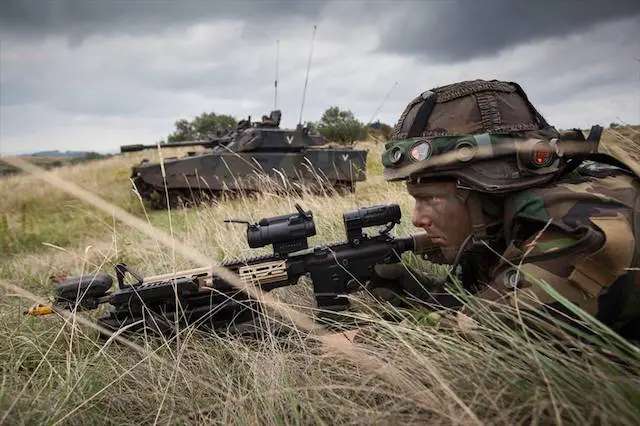|
|
|||
|
Defence & Security News - (Netherlands, Germany)
|
|||
|
|
|||
| Joint German – Dutch armoured division to be operational in 2019 | |||
|
The concept of smart defence or of common pooling and sharing is at the front of the German and Dutch defence cooperation. The Dutch Defence Minister, Jeanine Hennis-Plasschaert and her German counterpart, Ursula von der Leyen, have announced at their parliaments on 15 September the signing of a formal cooperation agreement.
|
|||
|
|
|||
 Soldier of the Dutch 43rd Mech. Bgd during training (Source: defensie.nl) |
|||
|
|
|||
|
According to it, the Dutch 43rd Mechanized Brigade (3,000 troops) will become part of the 1st German Armoured Division, with the formation becoming operation in late 2019. Further to that, 16 Leopard 2A6 tanks of the Dutch Army will be upgraded at the 2A7 version to match the German ones. The Brigade will then lease the 18 required tanks to bring up the required company. The division will become a joint formation from the company up to the division level, as the Dutch brigade will become subordinate to the German Division and will be reinforced with a German battalion, which will further be supplemented by a Dutch company of 100 soldiers. The 43rd Mechanized Brigade will continue to be based in the Netherlands but the Dutch company will be relocated to the Bergen-Hohne NATO military training area in Lower Saxony of Germany. The collaboration process is expected to start towards the end of the year or the beginning of 2016. The agreement is another step in the Dutch-German bilateral cooperation, after the integration of the 11th Airmobile Brigade in the German Rapid Reaction Division. In a period of reduced defence budgets, the Netherlands had decided to abolish some of its capabilities and invest in pooling and sharing with regional allies. The phasing out of the Leopard 2 tanks, which was clearly the loss of the entire armoured capability, was a result of the required drastic budgetary cuts. However, the crisis in Ukraine, the overall tensions in the international system and the criticism that the cuts have crippled the country’s Armed Forces, forced the Dutch Government to announce in September 2014 a USD100 million per year increase, in real terms, in its defence budget, while the FY2015 defence appropriations increased to EUR8 bil. from EUR7.6 bil. last year. The Dutch Ministry of Defence does not seem to be interested in rebuilding the lost capabilities but continue to invest in pooling and sharing, as part of its European and NATO efforts to provide expeditionary forces. Nevertheless, major acquisition programmes, such as the 37 F-35 Joint Strike Fighter aircraft, at a cost of EUR5.2 billion. Such programmes will bear a heavy burden to the overall defence budget which need to cover the needs of international operations, personnel costs, maintenance, R&D and other accounts. |
|||














